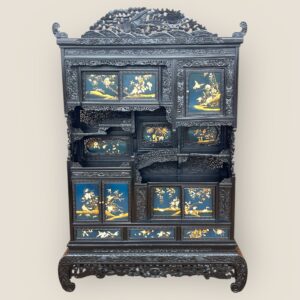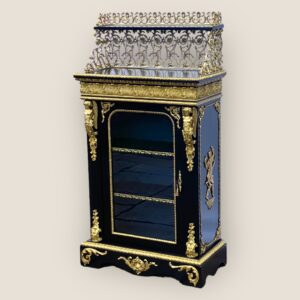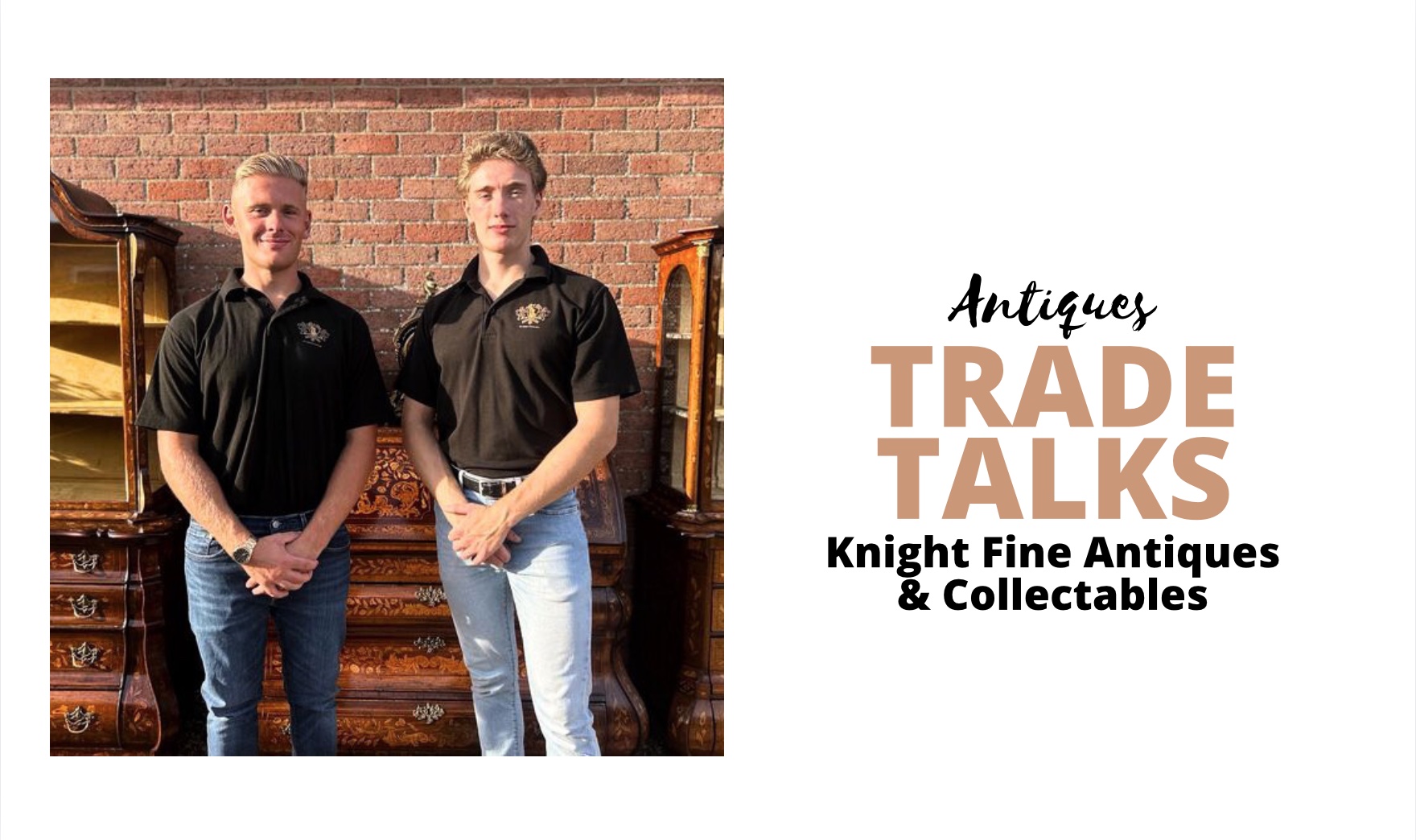#Antiques #Trade #Talks #Knight #Fine #Antiques #Collectables #Antique #Collecting
Knights of Old

Third-generation antique dealers and brothers 24-year-old Harry Knight and Arthur, 22, run an online fine and luxury antiques shop Knight Fine Antiques & Collectables, with customers around the world. Specialising in 18th and 19th-century antique furniture, the brothers say they have learnt a lot about the trade from their father, Gary, an antique restorer and dealer, and grandfather, Reg, a former dealer of some repute. They tell us about their life in the trade, and their nascent business which started in March 2024.
What is the unique appeal of antiques for you?
We get to find, restore, and resell unique antiques that are not only incredibly designed but also have great history and craftsmanship, which seem to be lost today. We are looking to find the greatest antique pieces, their stories and rehome them with their new families or collectors to be appreciated for generations to come.
What antiques do you predict will be in demand in 2025?
You cannot go wrong with good-quality, fundamental pieces such as your desks, tables, chest of drawers, bookcases, and wardrobes.
What antiques do you have at home/collect and why?
Now my priority is the business, so I have not been personally collecting pieces, but my favourites are ones with hidden compartments. For example, we have a Georgian Chest on Chest with a secretaire, and hidden in the back of the secretaire part is three drawers for hiding personal items. Or displays of the exceptional craftsmanship, an example of this in our current stock is a Napoleon III pier cabinet, I believe of exhibition quality, profusely decorated with brass, and even has a brass gallery to the top. Now that would be the coolest book cabinet or display cabinet in the world, also being ebonised it can go great in modern white and black homes as well. Another piece is our enormous Meiji Period Japanese Shodana (Cabinet), which has incredible details throughout, from carvings top to toe, oriental bridges joining shelves, and beautiful inlaid scenes of birds and nature scenes. We are fortunate enough we get to handle and deal with amazing pieces all the time, if I had a big enough home, you could find a place for them all!
What do you think will be the antiques of the future?
We all will be one day! But this made me think about one thing: the goal post for antiques continually moves – anything 100 years and older is an antique, so each year we go forward; what was once vintage will become antique, so there will be different styles and ages of antiques upcoming. Every day, these pieces get older, further away from their time of creation, their stories continue, I think for those reasons they will never lose their uniqueness.

How is the industry changing and are you optimistic for its future?
It is the digital age now; all businesses must adapt to it and we have already started the beginning of the Artificial Intelligence age, which I think will really progress all businesses. That is the tale of business to always embrace and innovate with new technologies. Just because we sell antiques, does not mean the business needs to be antique.
Online shopping is a must, being able to buy an item from your phone and get it to your house within a few clicks is essential. Our duty is to try to create the experience of seeing an antique in person for our customers online, which is very hard to substitute for the real thing. We do this by clearly conveying descriptions, measurements, great photography and videos.
I am very optimistic for the future – the antiques are only getting older and developing greater stories and provenance. The business environment is competitive, I think adaptability to new technologies is going to be the key.
How is new technology good for the trade and buyers/collectors?
It is good for everyone, it has opened the market and allowed buyers to find exactly what they want when looking at dealers across the country and world, or to browse the unique and special pieces which they would have never seen before just going to local shops – that is the power of the internet.
What antiques/artworks would you buy if money were no object – your ‘Holy Grail’ pieces?
The Nostell Priory (Yorkshire) Chippendale Partners Desk.
You’re down to your last 50 quid – what antiques/art would you buy?
Chest of drawers.
Where are your favourite antique hunting destinations and why?
Auctions, we find fantastic items from auctions. Also straight to customers, we have people contact us about selling pieces and we always consider everything. I would prefer someone to call me than let an item lay to waste in a shed or barn. We can hopefully restore it, move it on to its new owners, where it can be admired, used and loved again.
What are some of the biggest mistakes that buyers make – what questions should they be asking?

Honestly, I have not had any buyers so far make big mistakes (touch wood). I would always suggest if you have any questions on antiques, please ask the dealer before you buy it, we are always happy to help or answer any queries to assist you. From a dealer’s perspective make sure to provide as much key information with your listings and any FAQs.
Any styling advice for using antiques in the home?
Brilliant question, I am not an interior designer, but I have my thoughts, and one of the biggest misconceptions is that antique pieces do not blend or style well in modern homes and there should be antique-style homes or modern-style homes, but you can have a home with beautiful blend of both. The minimalist approach of modern design can really make the correct antique furniture pieces stand out as centrepieces in any home (specifically with luxury antique furniture pieces which are like pieces of art).
Ebonised furniture, is a dark horse, I think there are exceptional ebonised pieces, which can blend better with the modern black and white styles.
Some of my favourite antique furniture pieces are ones with multiple functions or features, such as bureau bookcases and secretaire chests. These are great for smart use of space, or small spaces, especially with people working from home. You can have a bookcase, cupboards, and desk space all in one, or a chest of drawers with a desk space in your bedroom.
What do you consider the high point of your career in antiques?
I am writing this as of January 2025, we started in March 2024 as Knight Fine Antiques, so we are only in our first year – very early in the antiques trade and are continuously learning. Our high points have been examples of the antiques we have discovered all over the country, some already on our website and other special pieces coming up soon, which I will give you the exclusive on: we have an exceptional 19th-century Pietra Dura ebonised credenza of very large proportions (originally from a prominent hall in Norfolk), which is coming up to be restored. We also have a William IV Anglo-Indian campaign cupboard on secretaire chest also waiting to be restored.
Are antiques attracting younger buyers and, if not, how can the industry reach out to them?
Social media exposes it to younger buyers, especially TikTok, however with young people now only getting their first homes in their late twenties-early thirties, antique furniture is not the first thing on their minds. It depends on how much freedom they have in their homes, because if they are still with their parents some like to keep their house with their own style.
I think a lot of young people are missing out here as you can get great, practical, antique furniture for low costs at auctions, give them a little revamp and they are ready to go – much cheaper than buying furniture straight from retail. Or even better go to a dealer, such as ourselves, who have fine antique furniture for fine prices, which are restored and ready to go in your home, delivered to your door, all for better costs and quality than modern furniture suppliers.
What advice would you give to people new to antiques who want to learn more?
I would personally suggest reading. However, for people who are not readers YouTube is a great resource where you can watch videos of people explaining different antiques, styles and makers to you, and see the pieces as well. As most dealers would also suggest, go in person to auctions, museums, antique fairs and get looking at pieces hands-on instead of just looking at pictures.




